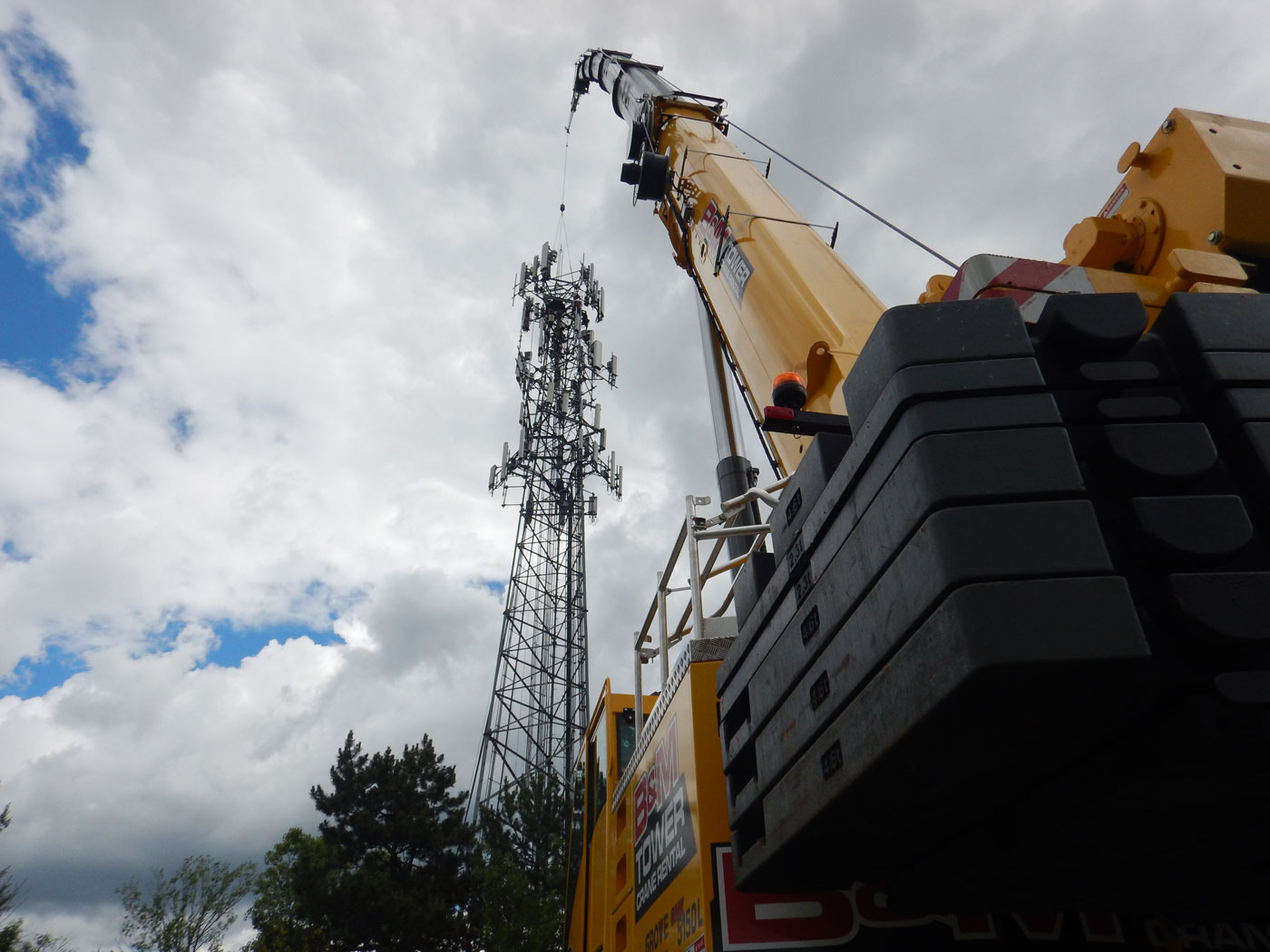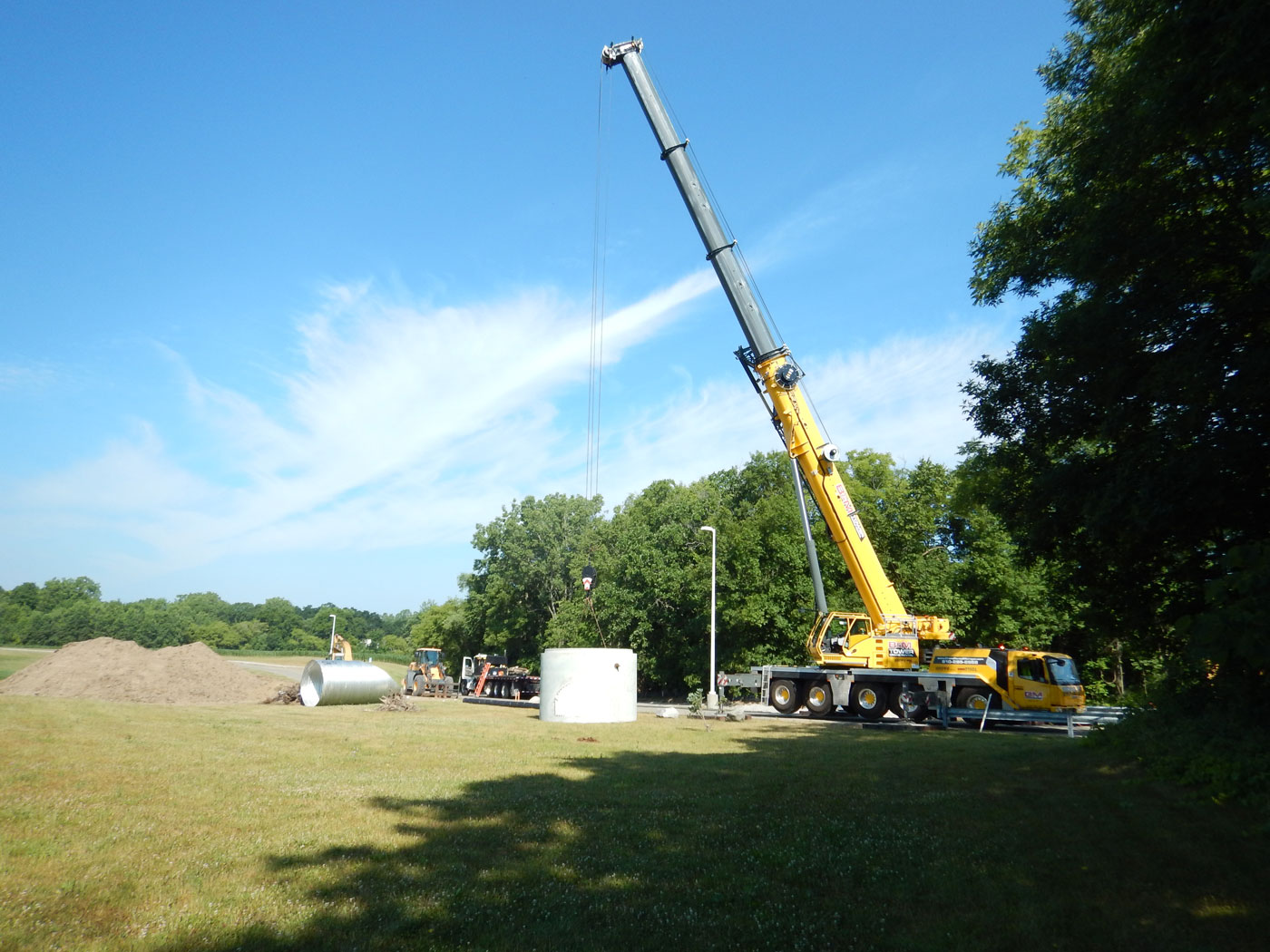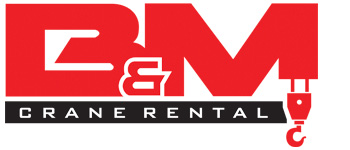If you’re reading this article, you likely need some help deciding which crane to use for your project. No matter what industry you work in, it is vital to your success that you use the right tools and equipment to get the job done right. Picking the appropriate crane for your needs depends on a number of factors including the terrain you will be working on, the weight of your materials, and even the weather conditions. There are so many crane types to choose from nowadays, it can be hard to keep track of all your options! We want to help you get a better idea of what each crane brings to the table, so you can better decide how to set you and your team up for success on the job.

Telescopic Crane
Telescopic cranes are great for day-to-day hauling or projects that have varied height requirements. They get their name from their boom which consists of a number of tubes fitted inside each other that can slide to lengthen or compact the boom similarly to a telescope. This boom is controlled by a hydraulic cylinder to easily adjust the boom length whenever you need. Telescopic cranes are often used in shipping ports, rescue missions, and short term construction projects. The compactness of telescopic cranes makes them great options for mobile applications as well since they can be truck mounted in certain cases. These cranes also have a heavy lifting capacity anywhere from 25 to 300 tons!
Truck-mounted Crane
Truck mounted cranes are the most commonly used cranes today for a few different reasons. These cranes are actually able to drive on public roads, including the highway, without any additional licenses or approvals. Being able to skip the coordination and expenses surrounding crane transport is a huge benefit afforded with truck-mounted cranes. This also makes truck-mounted cranes ideal for loading and unloading equipment at a jobsite. At B&M Tower, we carry multiple types of truck-mounted cranes from different manufacturers that are able to carry loads of up to 50 tons.
Crawler Crane
If you’re using a crawler crane, it means serious business. These cranes are mounted on an undercarriage with large tracks providing mobility, as well as stability. The tracks are able to expertly distribute the weight of the crane so that it does not sink in soft ground. A crawler crane is great at traversing basically any terrain, even while carrying a load. Due to their extremely heavy weight, crawler cranes move pretty slowly, making them a bit of a challenge to transport from site to site. Oftentimes you will have to disassemble the crawler crane, at least into boom and cab, before using truck or railway cars to move the crane to another location.
Tower Crane
Tower cranes are often fixed in place via a concrete slab so that they have a stable base from which to work on. The process of building a tower crane can take weeks including preparation time since there are so many moving parts, and will require a large team of competent workers. Typically, a tower crane will rise hundreds of feet into the sky, and can extend their boom just as far. These behemoths are used to erect very tall buildings, or lift heavy materials. Without tower cranes, we wouldn’t have the skyscrapers that make most American cities what they are today! Tower cranes need to be well-balanced since they are so tall and have an increased risk of tipping over when carrying heavy loads. A good rule of thumb to remember is that the closer the load is positioned to the mast, the more weight the crane can lift safely.

Rough Terrain Crane
These cranes are also referred to as all-terrain cranes since they are well suited for off-road or uneven job sites. Rough terrain cranes are mounted on four rubber tires, with four wheel drive technology to maintain traction on slippery surfaces. This crane type is known for its compact build which allows it to squeeze into small spaces and provide high stability when lifting heavy loads around the jobsite. If your job site will be cramped, you may want to look into a rough terrain crane equipped with four wheel steering as well to make maneuvering through tight spaces even more accessible. Another benefit of rough terrain cranes is that they are fully mobile. This means your rough terrain crane can pick up a load and transport it along long distances and uneven ground to your desired destination.
Sidelifter Crane
Sidelifter cranes can be found permanently mounted on either truck beds or railway cars. The sidelifter is often used at shipping yards to load and unload containers. The sidelifter does this with its two hydraulic powered cranes, mounted at the front and back of the vehicle chassis. Since this type of crane is mounted on a vehicle, it is easy to travel for long distances on public roads while holding a load. Though it is sometimes used in tandem with a straddle carrier or reach stacker, the sidelifter can often work independently when loading and unloading, making it a great option for pickup and delivery in commercial districts.
Overhead Crane
Overhead cranes, also called bridge cranes, include a hook-and-line mechanism which is connected to a horizontal beam running between two rails. This type of crane is often used in manufacturing buildings to assist in constant, specific heavy-duty lifting. For example, steel factories, automobile plants and paper mills tend to use overhead cranes when lifting, loading, and transporting materials around the premises. Overhead cranes can be fitted with a number of different attachments to handle a diverse variety of loads and materials. Economic analyses actually found that implementing one overhead crane can replace multiple forklifts, and cover a larger work area. This type of crane is a great investment to reduce the ergonomic stress of using manpower to move heavy cargo. Trust us, if you utilize an overhead crane, your crew will thank you!
Floating Cranes
As one of the more rare categories of crane, you may not even know that floating cranes exist! These cranes actually float on water so they can be used in large waterways. They are mainly used for bridge building or port construction since other cranes are usually unable to function in these environments. Floating cranes can also be used for loading and unloading of heavy and awkward materials onto and off of barges. In certain cases, floating cranes have actually been used to salvage sunken pieces left after shipwrecks. You may be wondering how the floating crane doesn’t sink, and the answer is truly a feat of modern engineering! Some floating cranes are mounted on pontoons, while others require barges to support them. It may seem impossible, but these cranes can actually lift up to 9,000 tons of material.
Clearly, the world of cranes is vastly diverse. Each crane type has its strengths and weaknesses that you can benefit from based on your unique project. If you are overwhelmed by this information, or simply need help choosing the right crane for your job, feel free to contact B&M Tower to speak with a knowledgeable employee on what crane will work for you.

